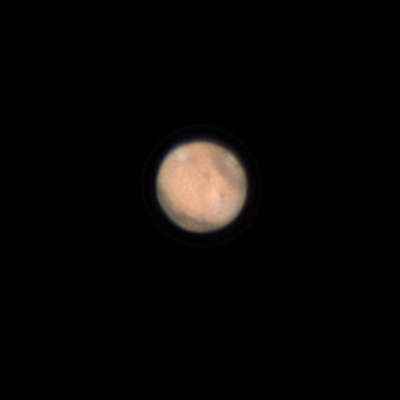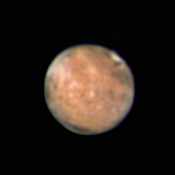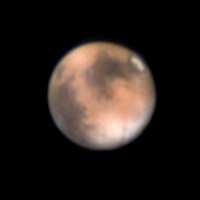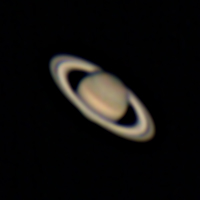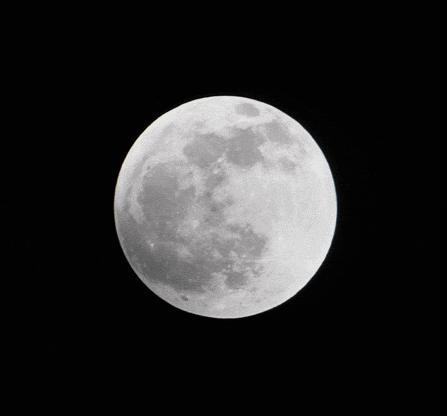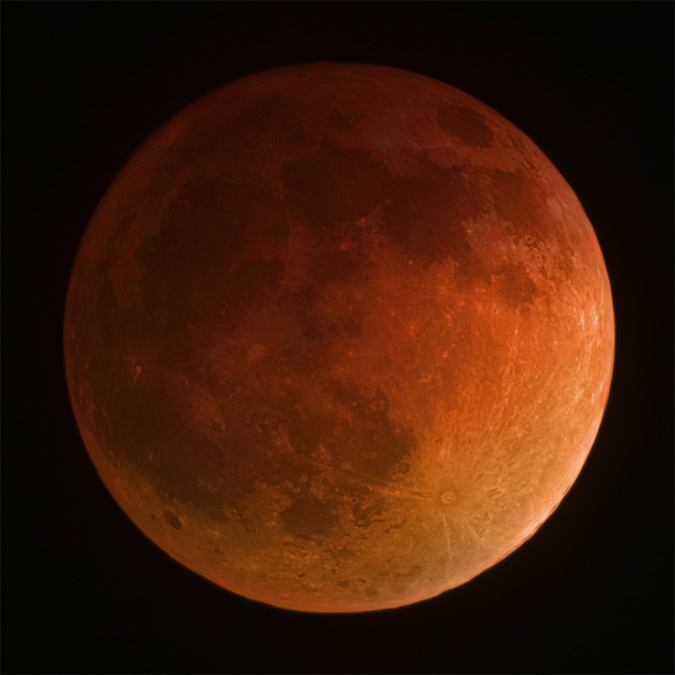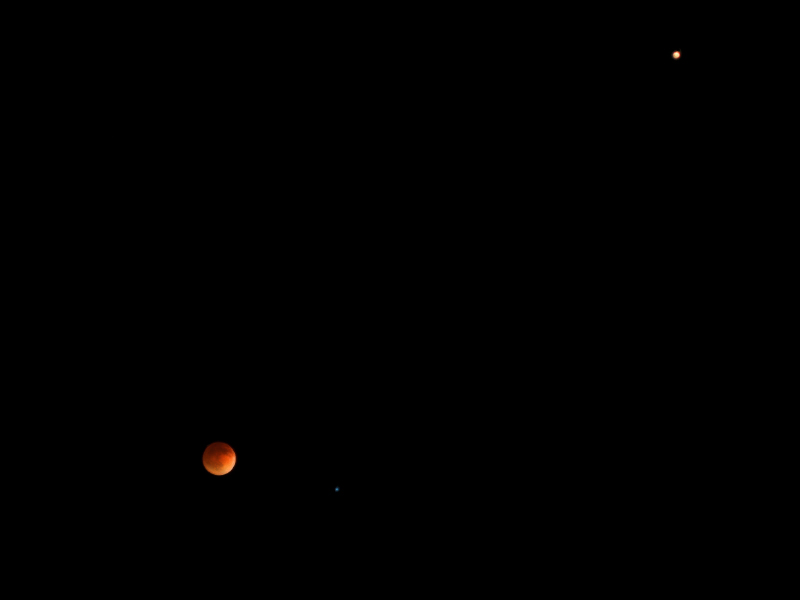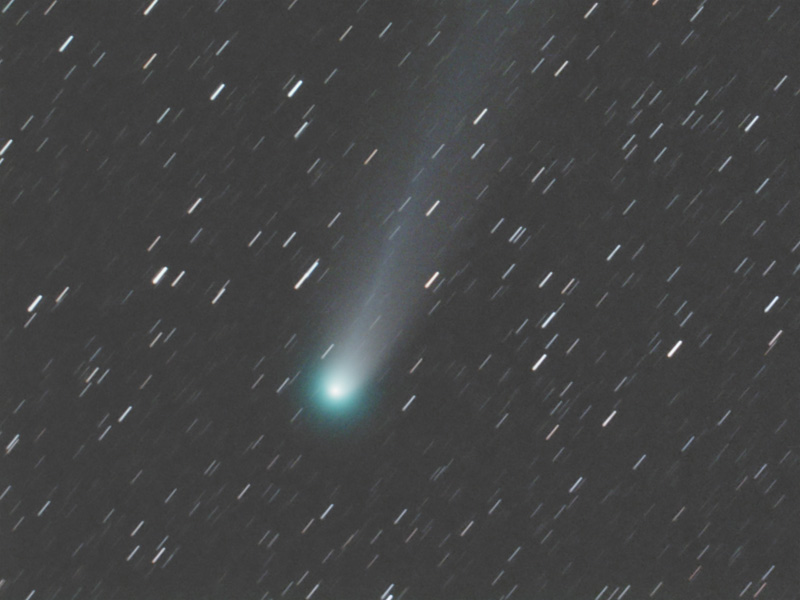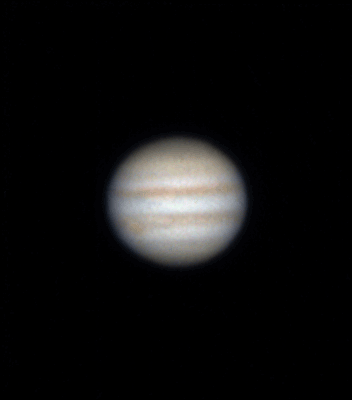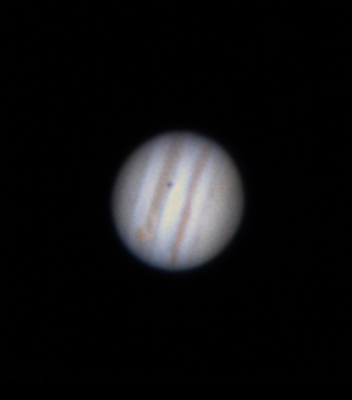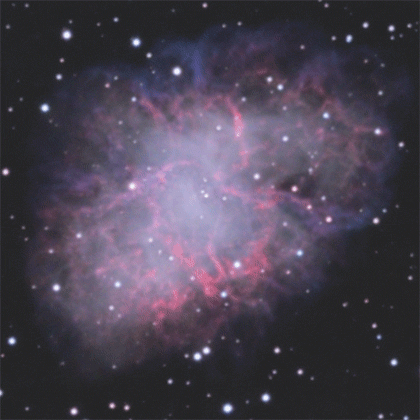will skip earth and the moon for now
and move on to the 4th planet from the sun
Mars aka the red planet
mars is a small planet, about half the size of the earth
with mass equivalent to mercury
Mars is the only planet who's surface detail can be seen from the earth
(detail seen on other planets is related to clouds)
The red-orange appearance of the Martian surface is caused by iron oxide (basically rust) in the soil
as well as a reddening effect due to dust in the atmosphere.
many areas have blue tinted rocks altering the surface color.
the squiggly line upper right of center is a giant dust storm on the surface.
the white dot upper left is a melting polar cap
made of carbon dioxide and some water ice.
the polar caps change with the martian season
and can be followed in the telescope when mars is in view:
the orbit of mars is relatively close to the earth's
as a result detail in mars is only visible through telescopes
as the earth approaches mars in it's orbit
this occurs every 20 months (approximately)
and lasts for 4 to 6 weeks, with the best viewing for only 2 weeks
so folks get excited when this occurs
the next will be in april 2014 :(
this of course is the time when mars goes into retrograde motion
as the earth passes mars
(which we all learned about in earth science and promptly forgot)
http://en.wikipedia.org/wiki/Mars#Astronomy_on_Marsmore stuff
mars has two moons
Phobos and Deimos
Phobos is in a decaying orbit, slowly falling to the surface
which brings up an interesting tangent
classic example of the Roche limit:
as Phobos descends to the surface of mars, the gravitational force acting on it will increase.
gravitational strength varies with distance.
so at some point during the descent the gravitational pull on the near side of the moon will by *much* greater than the pull on the far side.
stronger than the force holding the moon together.
the net result is that the moon will break apart, potentially leaving a ring on the way down.
this point is known as the Roche limit
an extreme example of this occurs near black holes where matter is torn apart in strings pointing towards the black hole
a process known as spaghettification
which is fun to say
https://en.wikipedia.org/wiki/Spaghettificationlastly, the sci-fi book red mars
http://www.amazon.com/Red-Mars-Trilogy-Stanley-Robinson/dp/0553560735considered "hard" sci-fi
gives what seems like a very real depiction of how mars could be colonized
has a feel similar to 50's sci fi accurately predicting space flight and moon walks
with lots of detail on martian planetology, whether, etc
warning:
very dark book, heavy on planetology, weak on biology
whw
